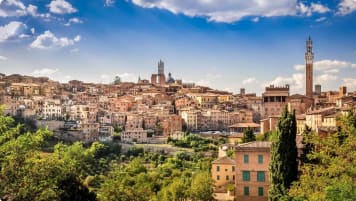Rise of the Maritime Republics: Pisa & Genoa
The cities of Italy, Pisa and Genoa rivalled Venice and its merchants. This article explores the affiliation to protect against Islam and then the war that followed. An Antipodean travel company serving World Travellers since 1983 with small group educational tours for senior couples and mature solo travellers.
31 May 22 · 10 mins read
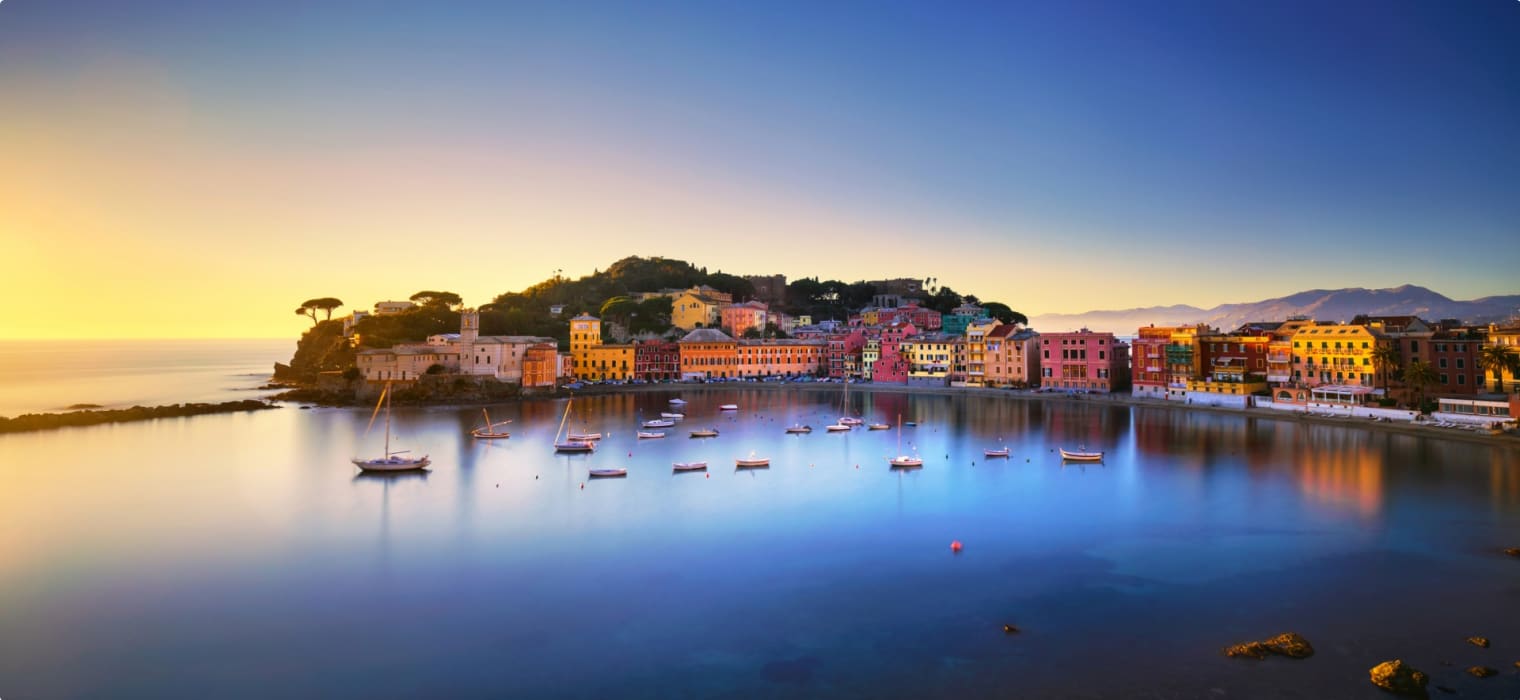
Rise of Pisa and Genoa Maritime Republics
Between the 10th and 13th centuries, Italian maritime republics dominated the Mediterranean Sea commercially and militarily. The numerous Italian city-states initially emerged in response to the constant attacks of Muslim raiders and pirates, developing powerful navies in order to defend themselves. By the 11th century, the Muslim fleets had been defeated, and the maritime republics started to expand their power. Over the centuries, they would take control of many of the maritime trade routes in the Mediterranean, sustained by colonies of merchants and settlers, and make key contributions to the Crusades.
Two of the earliest and most powerful city-states of Italy were Pisa and Genoa, situated close to one another on the Tyrrhenian Coast. Although the relationship between the two cities would later be marked by intense rivalry, their initial success would not have been possible without deep collaboration particularly as threat to the merchant activities of Venice. Their rise to prominence came in the 11th century, as they allied together to repel the threat of Arab expansion in the Tyrrhenian Sea. The two maritime republics then jointly launched attacks on Islamic Lands in Tunisia and Spain, expanding their control of trade across the Mediterranean. They also played essential roles in providing naval support for the First Crusade, for which they were rewarded handsomely with plunder and trading concessions in the conquered lands.
This article explores the rise of Pisa and Genoa as background reading for a number of Odyssey Traveller’s small group tours of Italy for senior and mature travellers. During these tours, we explore Italy’s incredible natural beauty, its ancient Roman heritage, its World Heritage Sites, and its world-famous cities, all with some truly spectacular scenery along the way. For even more information on Pisa and Genoa, readers are urged to take a look at David Abulafia’s The Great Sea: A Human History of the Mediterranean; Carrie E. Beneš’ A Companion to Medieval Genoa; and William Heywood’s A History of Pisa – all of which were used extensively during the writing of this article.
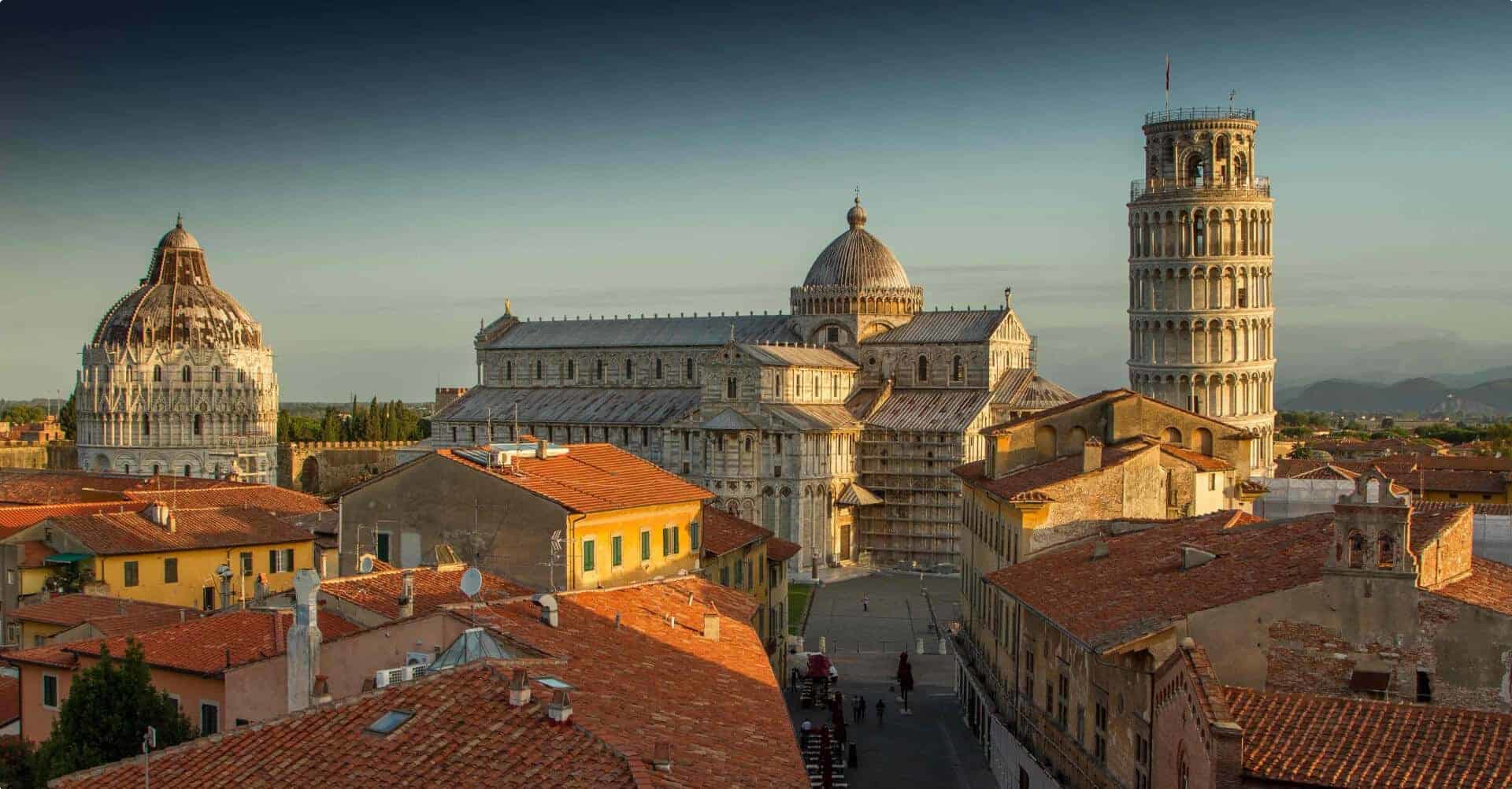
Rise of the Italian City-State
From the 11th century a number of many different cities began to develop throughout the central and northern parts of the Italian peninsula and organize themselves into self-governing communities, known as ‘communes’ or ‘city-states’. These states emerged by declaring their independence from either the church or the Holy Roman Empire, following the collapse of central authority in northern Italy.
The Italian city-state was able to emerge due to the unique situation in Italy in the Middle Ages, compared with the rest of Europe. Several of the region’s heavily populated urban settlements, which had been established by the ancient Romans, had managed to survive and continue after the fall of the Western Roman Empire. Life in the rest of Europe, on the other hand, had become more rural dominated by a feudal system of servile labour on huge tracks of land.
The Italian cities were thus able to exercise more influence than elsewhere in Europe to breakaway from their feudal overlords. They were then able to further assert their independence by capitalizing on the growing trade in Europe to expand into large prosperous trading metropoles.
Pisa and Genoa were among the earliest city-states of Italy. Each would grow to be important commercial and naval centres, controlling significant Mediterranean merchant and navy fleets. Originally part of the Lombard Kingdom, Pisa emerged as an independent city-state around the turn of the 11th century. Genoa emerged as independent around the same time, freeing itself from the Holy Roman Emperor. It was governed by the Compagna, a large association of Genoese merchants and seamen.
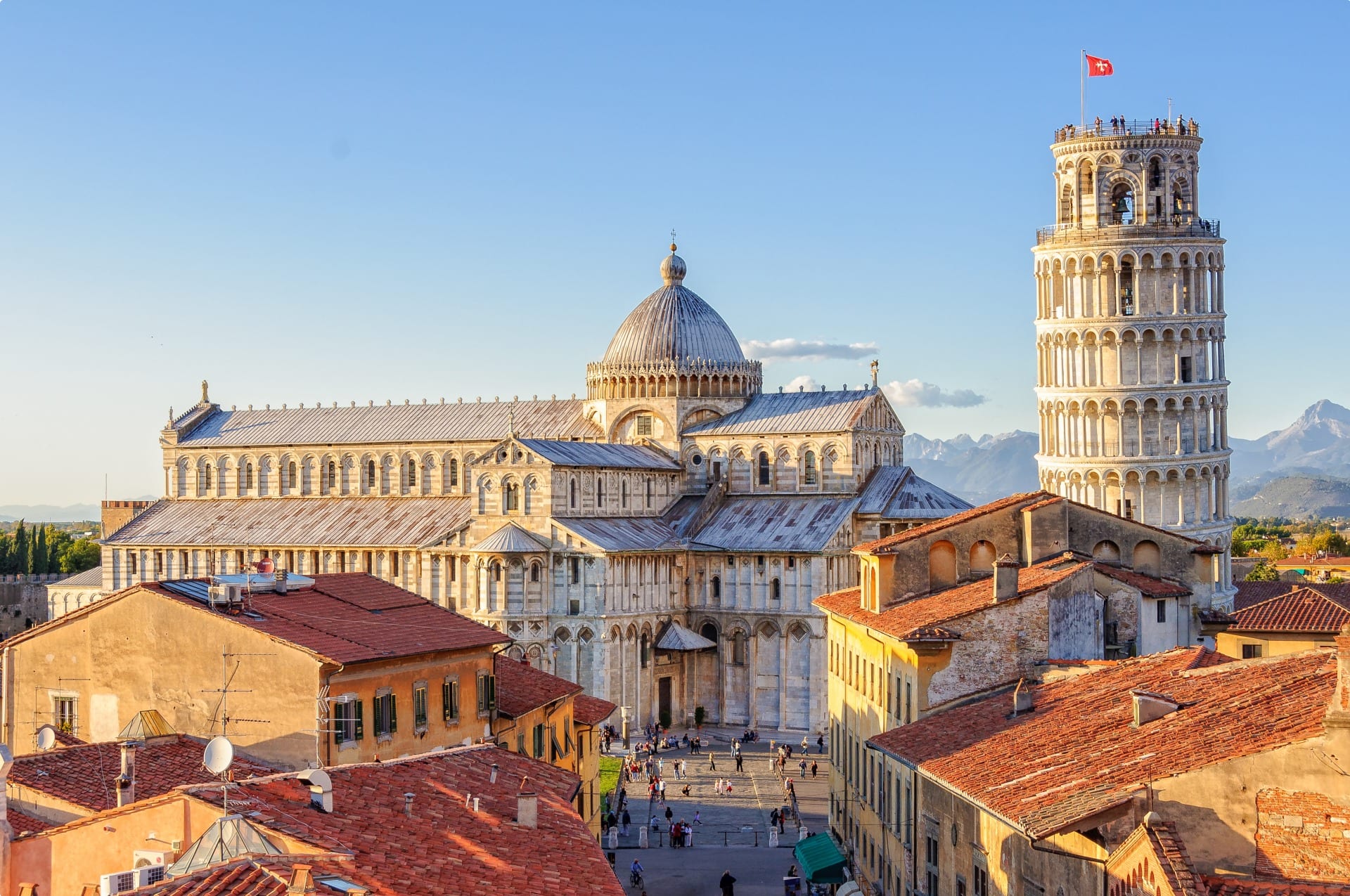
Although autonomous from imperial control, these two city-states were hardly democratic. Oligarchy triumphed, with leadership consisting of the patrician classes, chosen through careful manipulation. These classes included the petty nobility of the region around the towns, and a body of relatively newly made men whose states depended on the wealth derived from commerce, textile workshops or banking. The patricians did not always agree, leading to bitter struggles between factions on the streets of the cities.
Between these outbreaks of violence, however, there were opportunities to make money on an unprecedented scale. The elite invested in overseas trade directed to ever more distant destinations; they bought urban property; and they continued to manage their country estates, even extending them by acquiring lands across the water in Sardinia.
Pisa and Genoa dominated trade along the Mediterranean as the most powerful maritime republics of their time. Trade routes carried luxury goods from the east, such as spices, dyes, and silks to their ports, to then be resold (at a profit, of course) throughout the rest of the European continent.
The favoured products of Genoa’s coastline for export were wine, chestnuts, hers, and olive oils. It also developed its local textile industry: blue cotton cloth was a Genoese product, and in fact “jeans” owes its name to the French name for Genoa, “Gênes”. Pisa’s own obvious assets, meanwhile, lay in the flat fields stretching down to the coast, sown with grain, and inhabited with sheep that supplied wool, leather, meat, and dairy products.
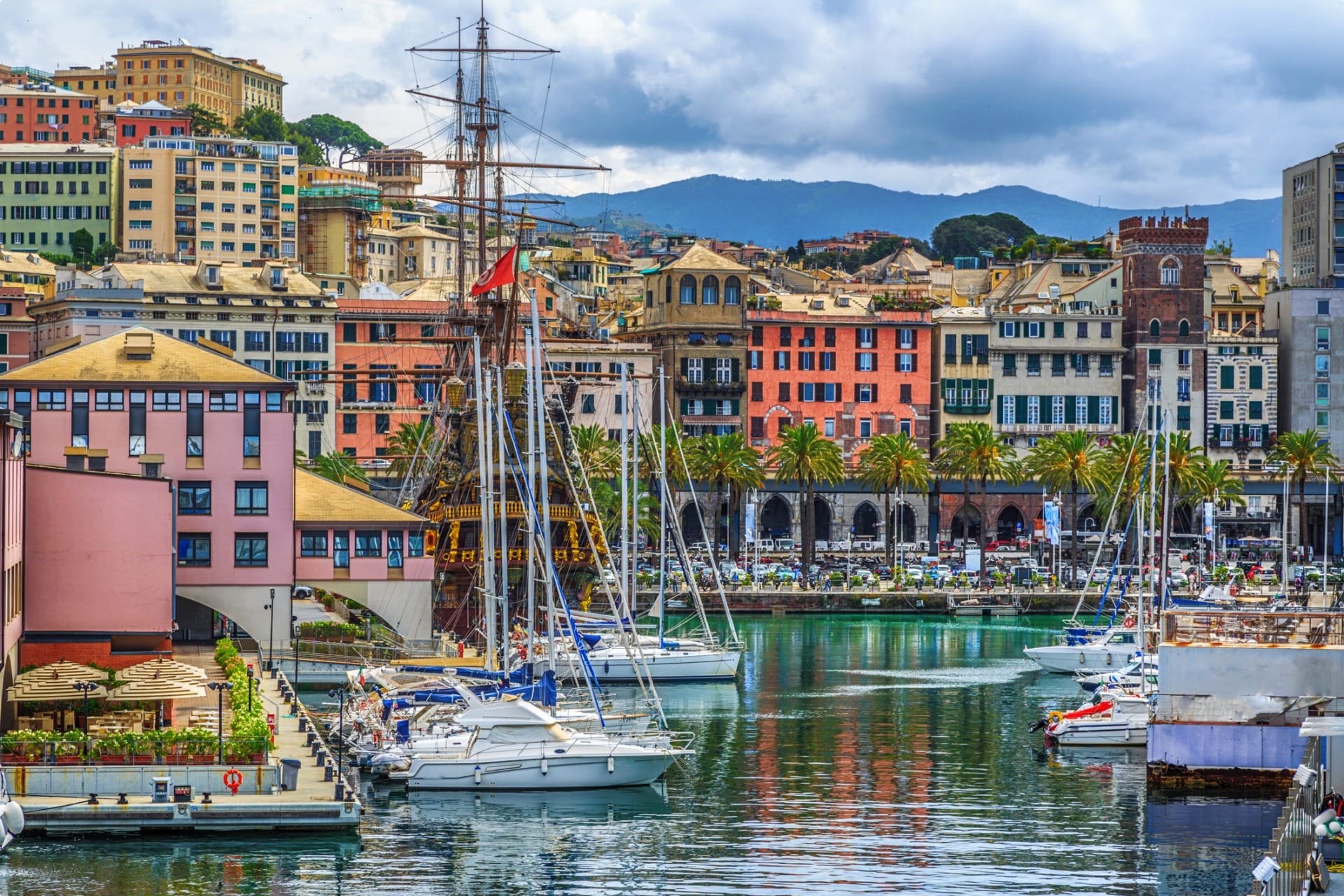
Conflicts in the Tyrrhenian Sea
To begin with, Pisa and Genoa, close to one another on the Tyrrhenian Sea, collaborated as allies to suppress Muslim expansion in the region. By 1000, Saracen armies had taken Sicily, using it as a base to launch raids into Sardinia and coastal cities on the Italian mainland. The obvious way for Pisa and Genoa to stop their advance was to establish command positions in Sardinia.
Pisa and Genoa responded with vigour when the army and navy of the Spanish Muslim warlord Mujahid, ruler of Denia and Majorca, settled temporarily in Sardinia in 1015 and again in 1016. In both years, the maritime republics led joint expeditions to repel the invaders, who reached no further than some coastal stations in Sardinia.
Chasing Mujahid out of Sardinia by 1016 greatly enhanced the credentials of the Pisans and Genoese as exponents of a Christian holy war against the Muslim enemy. The expeditions were approved and supported by the Papacy, and modern historians often see them as proto-Crusades.
After having expelled the Saracens, the better Pisa and Genoa came to know Sardinia, the more they saw that it was valuable in its own right. The island had a vast sheep population, and the two cities soon began to see Sardinia as an extension of their own countryside or contado. There was plenty of grain; there were big lagoons in the south that could be turned into saltpans; and the Pisans and Genoese had no compunction about enslaving Sards, whom they regarded as primitive folk. Abulafia writes, “There is only one word for the way Pisa and Genoa treated Sardinia: exploitation.”
The problem was that Genoa and Pisa both aspired to dominion over as much of the island as they could grab for themselves. Bitter conflict between the two cities was the result. It was Sardinia, rather than disagreements in the Italian mainland, that brought them most often to war. By 1046, the Pisans had ousted the Genoese from Sardinia to conquer the island for itself. By 1052, the city-state had also conquered Corsica, effectively claiming control of the Tyrrhenian Sea.

Attacks on the Islamic Lands of the Western Mediterranean
Having mastered the waters near home, Pisa embarked on more ambitious ventures in the Islamic lands. In 1063 a Pisan fleet raided the port of Muslim Palermo, destroying some enemy ships and seizing the great chain that stretched across the harbour to keep away intruders such as themselves. They did not penetrate beyond the quayside, but they still carried off vast amounts of booty
Then, in 1087, Pisa put aside its many disputes with Genoa to reunite and fight their common enemy – launching an attack on the city of Mahdia on the coast of Tunisia. Standing on a promontory, Mahdia had been founded by the Fatimid rulers who eventually took charge of Egypt and was one of the major towns through which passed the gold dust gathered in the bend of the river Niger, beyond Timbuktu. Control of Mahdia might have also be seen as the key to control of the Sicilian Straits, and therefore to free passage between the eastern and the western Mediterranean.

A massive fleet, composed of two hundred galleys from Pisa and Genoa, accompanied by troops from Gaeta, Salerno, and Amalfi, attacked Madia on 6 August. Although unable to capture the city, the troops managed to burn the Arab fleet in the city’s harbour before retreating. The destruction of the Arab fleet was significant as it gave the maritime republics control of the trade in the Western Mediterranean.
Four years later, Pisan and Genoa collaborated with Alfonso VI of Castille to attack and force the El Cid out of the Muslim Taifa of Valencia. They also unsuccessfully besieged Tortosa with support from troops of Sancho Ramírez, King of Aragon.
Abulafia writes, “These forays generated a sense that they were engaged in a holy struggle against the Muslims. God would reward their efforts with victory, with booty and with what were as yet ill-defined spiritual benefits.”
Genoa, Pisa, and the First Crusade
Having swept the infidel from the Western Mediterranean, the Italian maritime republics were ready for fresh adventures, and the preaching of the First Crusade pointed to the Eastern Mediterranean. At the Council of Clermont in 1095, Pope Urban II, urged faithful Christians to undertake an armed pilgrimage to Jerusalem to liberate the Holy Land from Islamic rule. The call was met with enthusiasm amongst all social classes in western Europe.
The citizens of the maritime republics were motivated to partake in these military endeavours by a holy fervour, hoping to gain spiritual benefits by spreading Christianity as a world-religion. But just as important was the expectation of material reward, whether in the form of plunder or of trading concessions in the conquered lands. William Heywood writes, “If, at one and the same time, a man may save his soul and fill his pockets, what need he ask for more? In the maritime republics the crusading spirit was metamorphosed to commercial enterprise.”
The First Crusade coincided with the establishment of the first commune (the compagna) in Genoa, with its aim primarily to build and arm ships for the crusade. In this sense, the Genoese participated in the crusade as a community, in contrast to elsewhere in Europe where participating knights were bound solely to their lord.
Genoa was the first to of the Italian maritime cities to offer support to the First Crusade, and its first engagement was in summer 1097 when its fleet of twelve galleys, one ship, and 1,200 men arrived at the port of Saint Symeon near Antioch. When Antioch fell a year later, the Genoese crusaders were rewarded with their first concession – a church in Antioch, thirty houses nearby, a warehouse and a well – creating the nucleus of a merchant colony. This grant was the first of many that the Genoese were to receive in the states created by the crusaders.
In the early summer of 1099 members of a prominent Genoese family, the Embriachi, anchored off Jaffa bringing aid to the crusader army besieging Jerusalem. The admiral of the Genoese fleet, Consul Guglielmo Embriaco the Elder (called “Hammerhead”), commanded his people to dismantle their own ship sand carry the wood to Jerusalem for use in the construction of siege engines. Without this, the siege might not have succeeded.
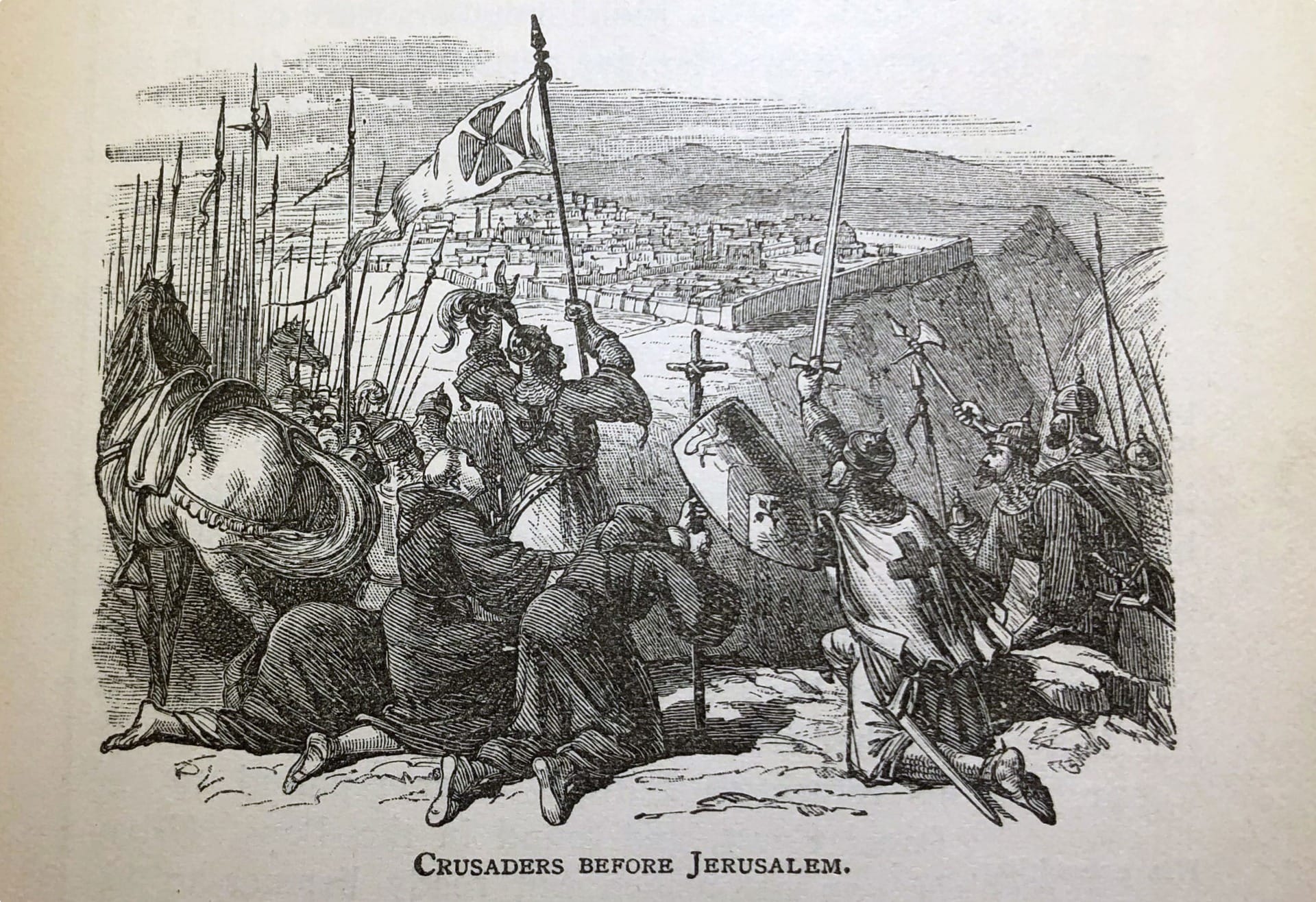
The successful Siege of Jerusalem marked an end to the First Crusade. As a result, four Crusader states had been established in the Holy Land: the Kingdom of Jerusalem, the County of Edessa, the Principality of Antioch, and the County of Tripoli. But Genoa’s military and financial commitments were far from over, with the maritime republic contributing to the consolidation of the Crusader states for almost a decade more, between 1100 and 1109.
In August 1100, twenty-six galleys and four supply ships, carrying about 3,000 men, set out from Genoa to the Kingdom of Jerusalem to begin a slow process of conquering a coastal strip. Lacking a navy, the young Frankish states were unable to conquer the cities along the coast by themselves, and Genoa was a reliable partner in their effort.
Most significantly, the Genoese sacked the ancient coastal city of Caesarea in May 1101, bringing back the Sacro Catino – an ancient green bowl they believed was the Holy Grail. Genoese fleets also assisted in the conquests of Arsuf (1101), Tartus (1102), Acre and Gibelet (1104), Tripoli and Jableh (1109), and Beirut (1110). In return for its help, Genoa received charters securing commercial privileges and possessions in the kingdom of Jerusalem, the Principality of Antioch, and the County of Tripoli.
The Pisans followed Genoa’s example, contributing to the first crusade by sending out a fleet in 1099 under their archbishop, Daimbert, to help seize Jaffa. They were rewarded with valuable commercial positions for their efforts and Daimbert became the first Latin patriarch of Jerusalem. Pisa merchants were then among the initiators of the 1113-115 Balearic Islands expedition, which was launched in the form form of a Crusade. Thanks to the power of its fleet, Pisa went on to find colonies in the Middle East and spread economical relationships with the Byzantine Empire and the Islamic world.
Tour of Pisa and Genoa
Odyssey Traveller visits Pisa and Genoa during several of our tours of Italy. Join us in Pisa to visit its infamous leaning tower, cathedrals, museums, and palazzi, or visit Genoa’s busy modern port, maze of medieval streets, 100 plus palazzi, and countless art museums.
We conduct a tour of Pisa during our:
- Heritage, Culture and History of Italy Tour (22 days);
- Italy and France, history of gardens small group escorted tour (25 days).
For a Genoa tour, you can join our:
- Small group tour to Venice and Genoa (18 days)
- Four Italians Tour: Genoa, Mantua, Orvieto and Bologna (22 days)
Our Mediterranean Small Island tour (25 days) meanwhile covers Malta, Sicily, Sardinia, and Corsica – Pisa and Genoa’s former territories.
Odyssey Traveller has been serving global travellers since 1983 with educational tours of the history, culture, and architecture of our destinations designed for mature and senior travellers. We specialise in offering small group tours partnering with a local tour guide at each destination to provide a relaxed and comfortable pace and atmosphere that sets us apart from larger tour groups. Tours consist of small groups of between 6 and 12 people and are cost inclusive of all entrances, tipping and majority of meals. For more information, click here, and head to this page to make a booking.
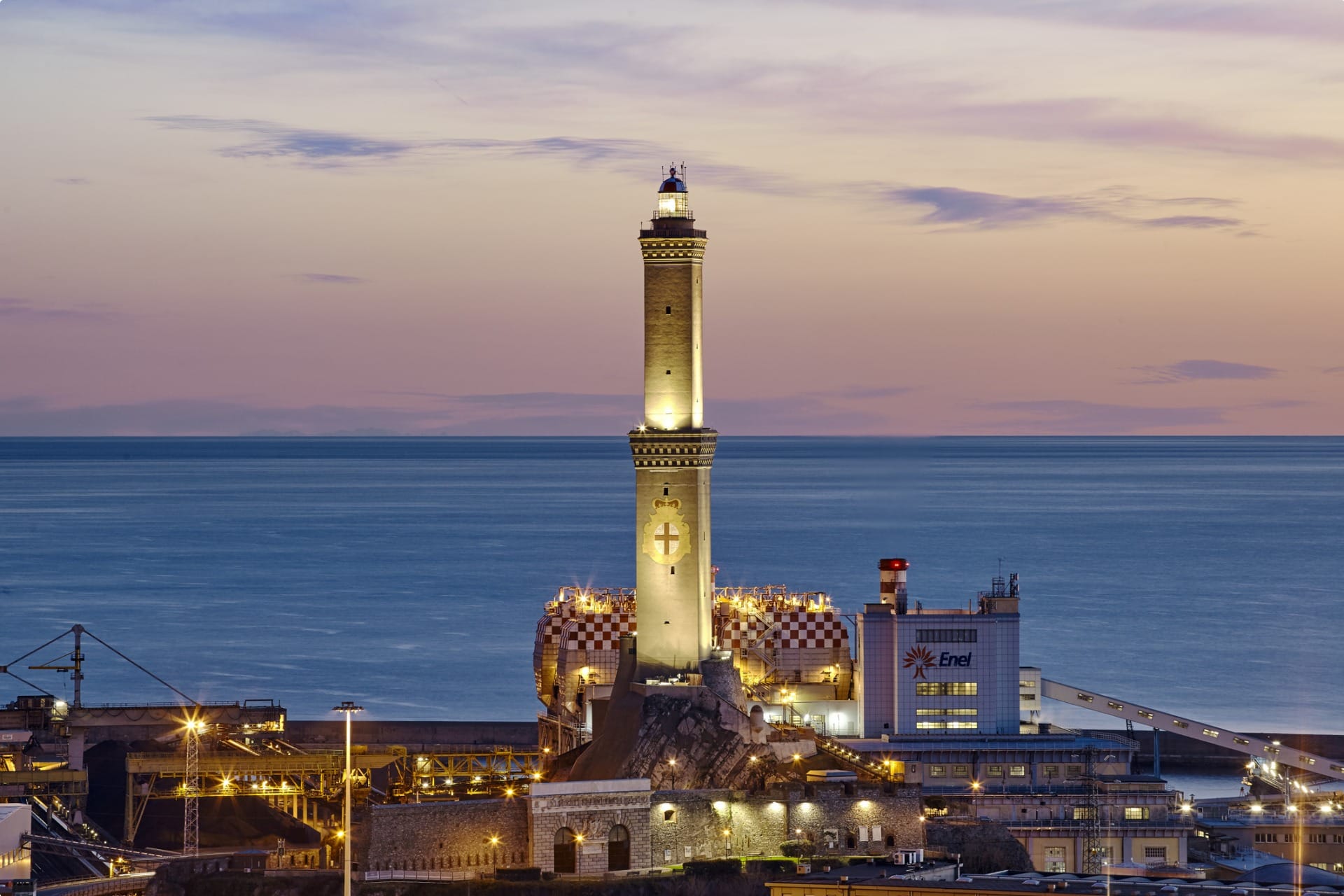
Articles about Italy published by Odyssey Traveller
The following list of articles published by Odyssey Traveller for mature aged and senior travellers to maximise their knowledge and enjoyment of Italy when visiting;
- Questions About Italy
- Trip Advice for Travellers going to Italy
- The Roman Empire
- Who were the Roman Emperors
- 10 Great Books to Read Before You Visit Italy
- Secrets of Venice
- History of Genoa, Rival to Venice
- Southern Italy
- Maritime Republics Amalfi Coast
- Key Men and Women of Renaissance Florence
You can also browse all the articles published on Italy by Odyssey Traveller.
External articles to assist you on your visit to Italy
Related Tours
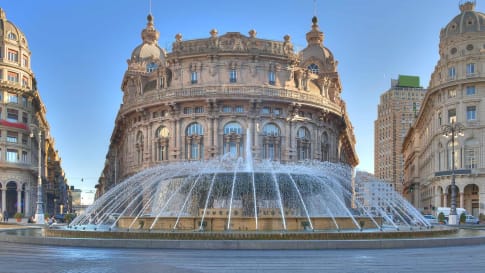
21 days
Sep, Apr, OctFour Italians: Genoa, Mantua, Orvieto and Bologna
Visiting Italy
A small group tour for senior couples and mature solo travellers to Genoa, Mantua, Orvieto and Bologna. Places where the Renaissance shone beyond Florence, Venice and Rome. Italy is one of the great countries of Europe this program with like minded people takes you beyond the regular path of travellers to see and learn more.
From A$15,995 AUD
View Tour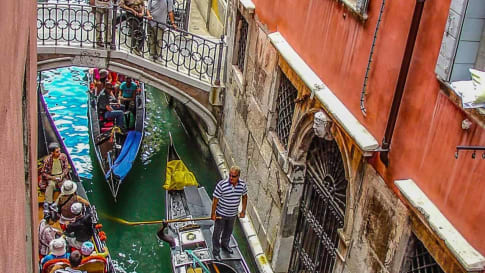
18 days
Sep, AprSmall group tour to Venice and Genoa
Visiting Italy
City pairs and rivalries exist. When spice, gold, steel swords and cloth where major commodities in the Mediterranean then Venice and Genoa fought for market share. Venice offered mercenaries, Genoa, banks. Italian history tour for those interested in joining a small group educational tour for senior couple and mature solo travellers.
From A$10,995 AUD
View Tour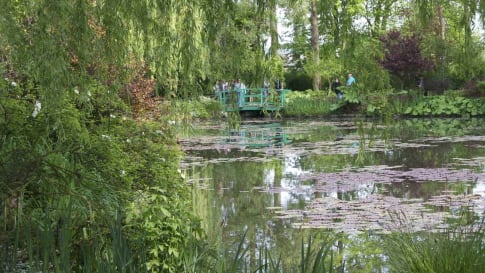
25 days
Aug, May, SepItaly and France, history of gardens small group escorted tour
Visiting France, Italy
Odyssey's small group tour explores some of the classic gardens of Italy and France that reflect changing fashions and garden designs throughout the ages. This fully escorted tour features an Odyssey Program Leader and a handful of local guides who will examine, discuss, compare and contrast the cultural and temporal similarities and diversities between the gardens of Italy and France and the historical influences on their design.
From A$17,595 AUD
View Tour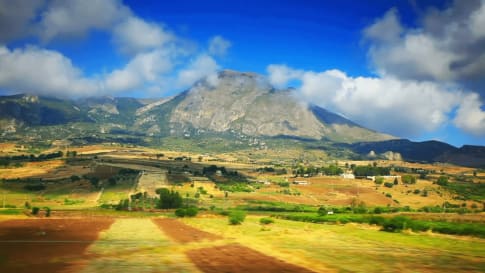
25 days
Apr, Sep, OctMediterranean Islands Small Group Tour | Malta, Sicily, Sardinia and Corsica
Visiting Corsica, Italy
For centuries Malta, Sicily, Sardinia and Corsica held the key to the Mediterranean. Unlike other European tour companies, Odyssey provides a tour leader and local guides to share detailed itineraries about the destinations on these small group journeys. This escorted tour of western Mediterranean explores the geography, history, culture and peoples of these 4 islands. Small group tour for mature couples and solo travellers. A reasonable single supplement is charged.
From A$19,750 AUD
View Tour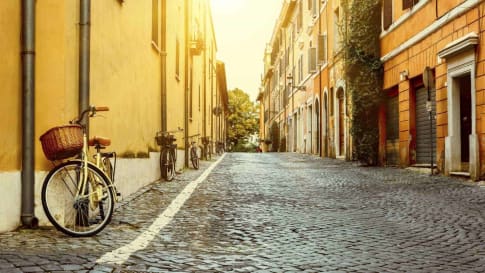
22 days
Sep, Apr, MarHeritage, Culture and History of Italy | Small Group Tours for Seniors
Visiting Italy
Rome, the world’s first superpower, lasted for almost a thousand years. In this small group tour for senior couples and solo travellers we thread our way through the Rome of the Emperors, then through the Italy of the Renaissance, Michelangelo, the Medici, and the Borgia. In the south, we visit the cosmopolitan city of Naples as well as Pompeii and the island retreat of Capri.
From A$13,695 AUD
View Tour
11 days
Sep, MayHeritage, culture, history of Italy, seniors small group - Short Tour
Visiting Italy
Odyssey's small group tour features the best of the Italian countryside as well as the great cities and icons of Italy. We will see the Renaissance cities of Florence, Pisa, and Lucca as well as the Umbrian medieval cities of Perugia.
From A$8,195 AUD
View Tour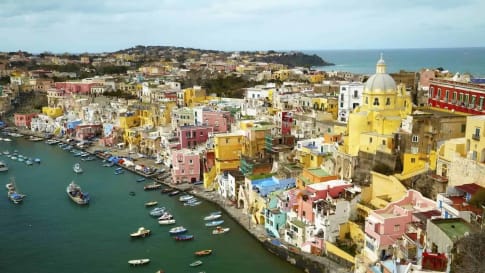
22 days
Jan, Apr, SepAncient History of Southern Italy & Sicily group tours
Visiting Italy
Our program for senior travellers, as well as featuring the rugged countryside of Southern Italy, also encompasses learning about the many civilisations that have shaped this land. We learn about the influence of the early Phoenicians, Greeks, Romans, Byzantines, Saracens, and Aragonese.
From A$16,995 AUD
View Tour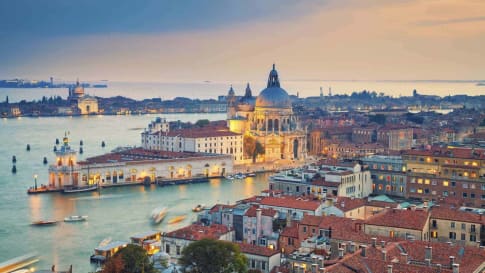
18 days
Aug, SepArt and History of Italy | Small Group Tour for seniors
Visiting Italy
Taken as a whole, Italian Civilization (which includes, of course, the splendid inheritance of Ancient Rome) is absolutely foundational to Western culture. Music, Painting, Sculpture, Architecture, Literature, Philosophy, Law and Politics all derive from Italy or were adapted and transformed through the medium of Italy.
From A$16,695 AUD
View Tour
20 days
May, OctCaravaggio’s Journey | Small Group Tour in Italy
Visiting Italy, Malta
On this small group tour of Italy and Malta for mature and senior couples and solo travellers we trace the life of Caravaggio, exploring the artistic works he left behind and the tumultuous life he led. We follow him from his birthplace in Milan to Rome, Malta, Sicily and Naples. In each place he lived Caravaggio left behind a rich legacy of art for us to admire.
From A$15,125 AUD
View Tour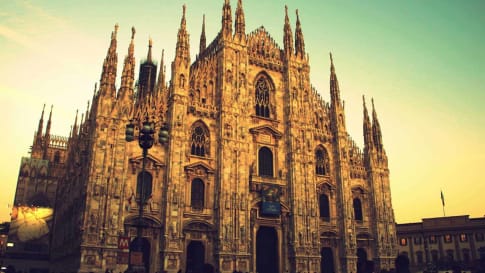
14 days
Sep, MayLakes and Landscapes of Northern Italy | Short Small Group Tour for Seniors
Visiting Italy
Our small group tour begins in the cosmopolitan city of Milan and ventures to 2 of the region's lakes - Garda and Maggiore. Our tour uncovers a wealth of natural beauty, castles, serene waters, snow-capped mountains, and breathtaking scenery.
From A$9,225 AUD
View Tour
12 days
Apr, Oct, SepMalta & Sicily - Mediterranean Islands small group tour
Visiting Italy, Malta
For centuries Malta & Sicily, held the key to the Mediterranean. Unlike other European tour companies, Odyssey provides a tour leader and local guides to share detailed itineraries about the destinations on these small group journeys. For mature couples and solo travellers. A reasonable single supplement is charged.
From A$10,150 AUD
View Tour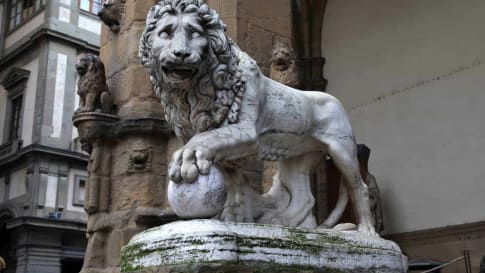
21 days
Apr, Aug, MayRenaissance Italy Tour: Story of Five Families
Visiting Italy
Explore Renaissance Italy on this small group tour though an examination of five significant city states. Florence, Urbino, Ferrara, Mantua and Milan were all dominated by families determined to increase the status of their city through art and architecture. Spend time coming to know the men and women who helped create the cities, as well as the magnificent legacy they left behind.
From A$14,295 AUD
View TourRelated Articles
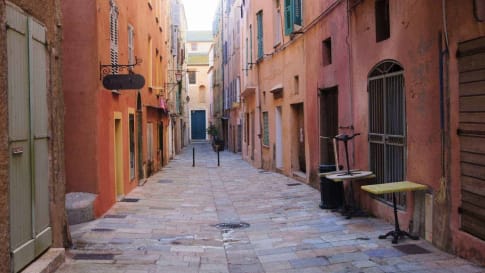
About Malta, Sicily, Sardinia and Corsica: islands of the western Mediterranean
For senior and mature travellers taking a small group tour to Malta, Sicily, Sardinia and Corsica, this paper answers questions and provides the historical context of a small group tour for couples and solo travellers to the Historic Mediterranean sea.
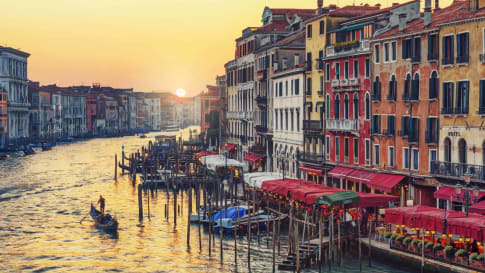
Carnivals of Venice
Article for senior couple and mature solo travellers joining a small group history tour visiting Venice and beyond to Italy, Greece, Turkey the Islands of the Eastern and Western Mediterranean and the Northern shores of Egypt, Tunisia. Learn about the role of Venice as emerging point of trade and navies for hire in the middle ages through to the renaissance.

Early History of Sicily: From the Phoenicians to the Arab Conquest
Early History of Sicily: From the Phoenicians to the Arab Conquest (800 BC to the 10th Century) Sicily in Southern Italy is the largest island in the Mediterranean, separated from the mainland by the Strait…
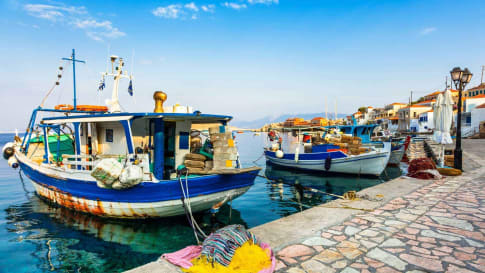
Empires Crossing the Mediterranean: 1130-1300
As a sea connecting continents and stretching from the Atlantic Ocean in the west to Asia in the east, the Mediterranean has for centuries been a centre of trade and exploration.

History of Genoa, Rival to Venice
In this article, we will look at the history of Genoa, and its rivalry with Venice that led to several wars fought between the two city-states in the 12th to 14th centuries.

Mediterranean Islands: Malta, Sicily, Sardinia and Corsica
Malta, Sicily, Sardinia and Corsica: An Educational Journey through Western Mediterranean This article takes you on a journey through the beautiful islands of the western Mediterranean – Malta, Sicily, Sardinia and Corsica – by tracing…
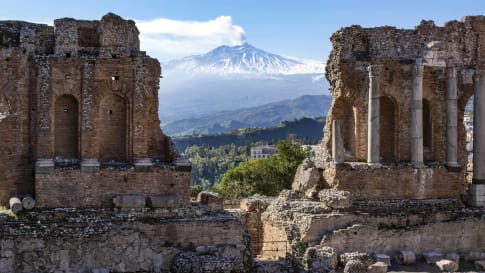
Sicily, Italy
Sicily, Italy An autonomous region of Italy, Sicily is a world apart: an ancient and rugged island shaped by successive waves of civilisation. Long the crossroads of the Mediterranean, Sicily is surprisingly untouched by modernity,…

Venice and its Merchants
An article that takes you on a journey to Venice in the Middle Ages and beyond. The famous merchants of 'La Serenissima' who dominated this medieval powerhouse for hundreds of years. Learn before joining one of the small group tours for mature and senior travellers couples and solo travellers to Venice and many other destinations in Italy.
